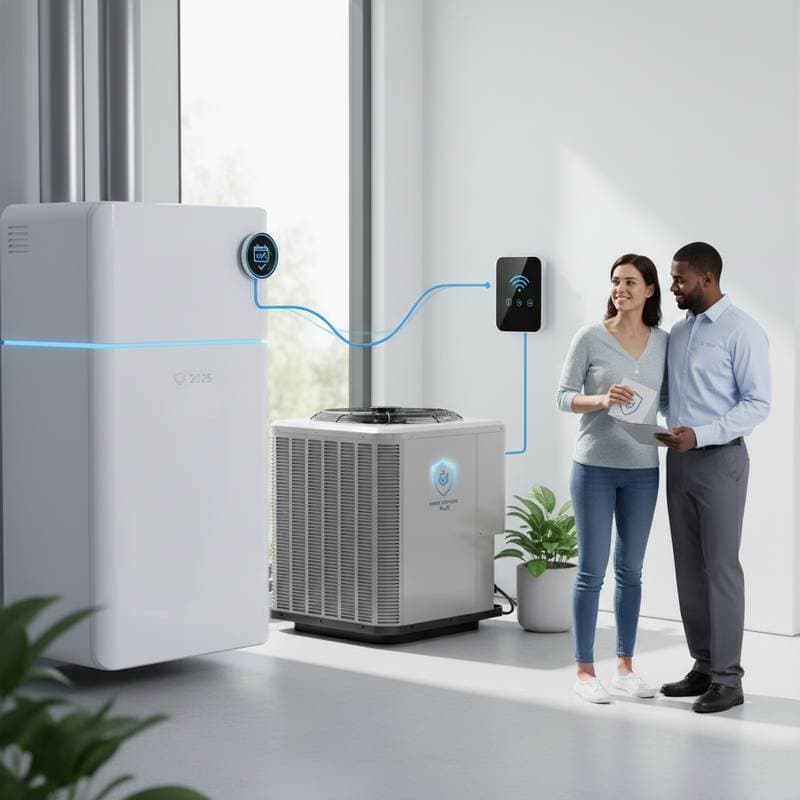Why HVAC Monthly Plans Are Exploding in Popularity
As an HVAC professional, I have witnessed numerous homeowners encounter the same distressing situation. The air conditioning fails on a sweltering summer day, or the furnace falters just before a winter storm. Each year, clients pose the same question: Could this have been avoided? The truthful response is frequently affirmative. HVAC monthly maintenance plans address this issue, and their adoption surges for compelling reasons.
The Real Problem Homeowners Face
Extreme weather in various regions strains HVAC systems intensely. Extended cooling periods overtax air conditioners, while sudden cold spells demand continuous furnace operation. Absent regular upkeep, these units diminish in efficiency and dependability rapidly. Industry statistics indicate that approximately 80 percent of HVAC failures originate from overlooked maintenance. Such inefficiencies elevate energy costs by 20 percent or greater.
Homeowners express a desire to evade substantial repair expenses, yet they frequently overlook routine tune-ups or filter swaps. Daily demands obscure HVAC priorities. Monthly plans gain traction because they remove uncertainty, distribute expenses evenly, and secure expert monitoring to avert minor faults from escalating into major crises.
Why HVAC Subscription Services Are Taking Off
Through extensive field experience, I observe that homeowners seek reliable comfort without unforeseen costs. HVAC subscription plans furnish that assurance. These arrangements resemble subscription models for entertainment or security, involving a modest monthly fee for ongoing protection. Typical offerings encompass biannual tune-ups, filter provisions, expedited service, and repair reductions.
One may wonder if enrollment justifies the commitment. The following outlines the primary drivers of this growing demand.
1. Predictable Costs and Budget Control
Unexpected repairs impose severe financial burdens. Replacing a compressor exceeds $1,200, and repairing a blower motor surpasses $600. A monthly plan establishes a fixed payment, typically $15 to $40 based on unit specifications and regional rates. This approach allocates maintenance funds across the calendar year, shielding budgets from abrupt demands.
HVAC specialist Carla Jensen notes, Homeowners appreciate stability. A fixed monthly plan converts unpredictable emergencies into manageable investments. Her insight holds true. Such foreseeability fosters assurance and encourages proactive measures over reactive ones.
2. Consistent Professional Maintenance
Every HVAC configuration, from central air to heat pumps, requires periodic care. Monthly plans assure programmed inspections without owner prompting. Technicians evaluate refrigerant charges, cleanse coils, examine electrical elements, and confirm airflow. These actions sustain optimal functionality.
Prevention forms the cornerstone of effectiveness. Routine servicing prolongs system durability, enhances indoor air purity, and optimizes performance. Participants in maintenance programs often achieve 10 to 15 percent reductions in utility expenses, as units operate more fluidly and hygienically.
3. Priority Service and Faster Response Times
During peak weather events, service providers face overwhelming call volumes. Non-subscribers endure extended delays, sometimes days. Plan members receive preferential scheduling. This accelerated access proves crucial when prompt intervention safeguards home comfort.
As an HVAC authority, I advise inquiring about same-day or next-day service commitments. Numerous providers incorporate these features alongside waived diagnostic charges, conserving time and alleviating pressure amid high-demand periods.
4. Extended Equipment Lifespan and Warranty Protection
View an HVAC system akin to a vehicle. Scheduled oil changes avert engine failure, and regular servicing extends operational longevity. Heating and cooling units follow similar logic. Pristine coils, accurate refrigerant, and secure connections mitigate premature deterioration. Manufacturers often mandate maintenance logs to uphold warranties, which monthly plans supply effortlessly.
5. Added Perks and Smart Home Integration
Certain premium plans feature smart thermostat oversight, air quality assessments, and duct evaluations. These enhancements attract technology-oriented users desiring interconnected systems. Aligning service intervals with intelligent devices enables remote performance tracking and preemptive notifications to forestall complications.
Practical Considerations Before Enrolling
Prior to commitment, assess offerings from multiple providers. Options range from tiered packages to uniform pricing. Consider these evaluation criteria:
- Coverage Scope: Verify inclusion of both heating and cooling components.
- Service Frequency: Ensure a minimum of two annual professional visits.
- Emergency Response: Validate timelines for critical interventions.
- Discounts: Inquire regarding savings on parts or system upgrades.
- Cancellation Terms: Confirm flexibility for plan adjustments upon relocation or equipment changes.
Expenses fluctuate by location, yet most participants recoup investments by sidestepping a single significant repair. Prioritize providers with proper certifications and insurance aligned with local regulations.
Steps to Secure Reliable Home Comfort
Adopting a monthly maintenance plan revolutionizes HVAC management. Rather than anticipating failures, partner with experts for seamless operation. Outcomes include superior air quality, reduced expenditures, and enduring performance that maintains steady comfort across seasons.
To initiate, consult certified HVAC professionals for personalized assessments. They account for regional conditions and customize plans to match your residence and finances. Proper stewardship ensures your system endures like new, fostering an inviting home environment regardless of weather.
Frequently Asked Questions
Q: How much do HVAC monthly plans usually cost?
A: Plans generally range from $15 to $40 monthly, varying by unit capacity, geographic area, and amenities. Enhanced options with services like duct cleaning or remote monitoring incur higher fees but yield substantial savings over time.
Q: What maintenance tasks are typically included?
A: Core inclusions comprise system inspections, tune-ups, filter exchanges, refrigerant verifications, coil sanitization, and performance calibrations. Additional benefits may involve expedited appointments or repair concessions.



